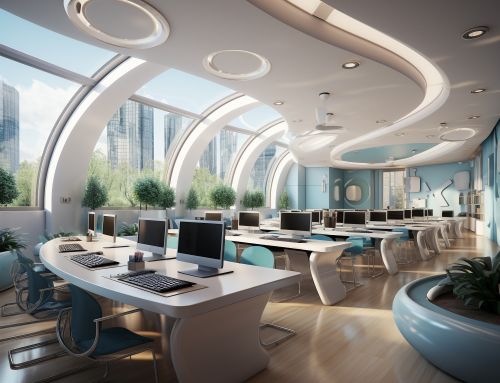What makes the difference between an awesome workplace and a terrible one? It’s not always management, staff, or the tasks and roles that make up the workload, but often the difference can be the actual environment itself.
Nobody enjoys working in a place that’s depressing and drab. Staff will underperform and if they are unhappy they probably won’t stick around for the long term either. This leads us to the question – what are the elements of a healthy and happy workspace?
Windows and natural lighting
Studies have shown that workers exposed to daylight in the office are healthier, happier and have better sleep patterns than their co-workers who are more sunlight deprived. A room with windows adds so many healthy elements to a workplace that their value cannot be underestimated.
Working inside all day can heighten the sense of disconnection from the wider world in a way that is alienating and antithetical to creativity and unbridled expression. A simple window allows light, warmth, andthe opportunity to be able to see something new to provide visual cues that prompt a conversation and to experience oneself as being somehow vaster and more connected to the outer environment. Even a skylight can bathe a workplace in natural light and make one more aware of the natural cycles of wind, rain and sunshine.
Bright colors
Bright colors can really make a room sparkle and pop with energy, which can flow onwards to staff and dramatically affect their moods. Remember the old beige box computers that were once the only option on the market? Boring, boring, boring!
When manufacturers (Apple) designed computers in a range of bright colors they basically revolutionized the workplace and set the computer industry on fire. It was such a simple move, yet its impact translated into a genuine affection for devices that were previously only considered to be utilitarian. When these were first introduced, some employees in office space St James and beyond actually looked forward to work to be back with their beloved computer again.
More autonomy
Workplaces with strict regimentation, officious rules and intense micromanagement are consistently flagged as being some of the most miserable environments to work in. Grown adults don’t appreciate being treated like naughty children, having to ask for permission to use the toilet, to eat when hungry or to clock off a few minutes early when the occasion genuinely calls for it.
Surveillance and monitoring breeds a culture of paranoia, distrust and resentment and workers are actually more productive when they are trusted to manage their workloads in flexible ways that suit their own individual style and rhythms. Some people enjoy coming in a little later and working back after hours when the office is quieter. Others are at their peak bright and early and prefer to start at the crack of dawn and leave mid-afternoon. Whenever possible, workplaces should be flexible enough to cater to these needs. People are not robots capable of performing at the same level for a full eight-hour day so why force them to be?
State of the art equipment
Making sure all the necessary equipment is top notch and functions properly goes a long way towards increased happiness in the workplace. Computers, phones, photocopiers, printers and networks that continually break down or are buggy just make simple tasks infinitely more complicated when this need not be the case.
The same applies to furniture such as desks and chairs. Ergonomic designs help conserve energy, reduce pain and injury and translate into greater worker health and happiness.
Creating a healthy and happy workplace is not rocket science but it does require planning, observation and commitment to be responsive to workers needs and a willingness to think outside the box.
Image via StockSnap.io under C.C.0 license






Leave A Comment